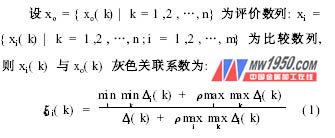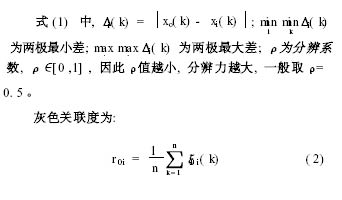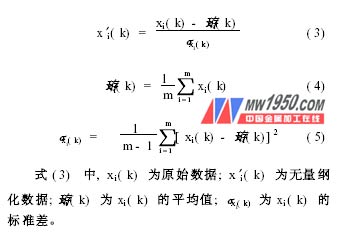ã€Abstract】 The basic principle of grey correlation analysis is introduced, and a grey relational analysis model for performance evaluation of foundry sand is proposed. The case study proves that the gray correlation analysis theory evaluates the sand performance to make the evaluation result more scientific and reasonable. Molding sand is an important auxiliary material in casting production, and its quality directly affects the quality and production efficiency of castings. Poor performance of sand is one of the main factors causing casting defects. Therefore, only by knowing and mastering the performance of sand, strictly selecting and using sand with good performance can meet the needs of production. There are many indicators to determine the performance of sand, and most of the indicators are random and ambiguous, in addition to the gray nature - the incompleteness and non-intelligence of information. Traditionally, the analysis and evaluation of sand properties is limited to qualitative descriptions and lacks strict quantitative analysis. In this way, it is difficult to obtain scientific and objective results based on experience and subjective will. The grey system theory mainly studies the modeling, prediction, decision-making and control of systems such as unclear system models, incomplete behavioral information, and unclear operating mechanisms. Using gray theory to deal with non-deterministic quantities can more closely describe the law of application of objective things. In this paper, the gray system correlation degree evaluation method is used to evaluate the sand performance, and the ideal effect is obtained. 1. The basic principle of the grey correlation model The overall gray correlation degree r 0 i value constitutes the total correlation degree R = ( r 0 1 , r 02 , ⋯, r 0 m). Among the total degrees of association, which gray correlation degree is the largest, it indicates that the evaluation series is closer to which comparison series. Since the evaluation indicators usually have different dimensions and magnitudes from each other, they cannot be directly compared. In order to make them comparable, the raw data needs to be dimensionless. There are many treatment methods, and they have their own advantages and disadvantages, and different treatment methods will have different effects on the evaluation results. In order to effectively distinguish the comparison objects, this paper uses the central method to perform data dimensionless processing, which can make the difference between the analysis objects the largest, thus improving the discrimination effect of the judgment. details as follows: Next page
The gray correlation analysis essentially determines the closeness of the connection by comparing the proximity of the curve geometry of the data sequence. In general, the closer the geometry is, the closer the trend is, and the greater the correlation; the smaller the opposite. The gray correlation degree evaluation method is to calculate the gray correlation degree of the data sequence of the correlation factor variable (ie, the evaluation series) and the system characteristic variable data sequence (that is, the comparison series), and perform the advantage analysis to obtain the evaluation result. 


Application of Grey Correlation Analysis in Quality Evaluation of Foundry Sand
